More Chinese companies embark on satellite and rocket ventures
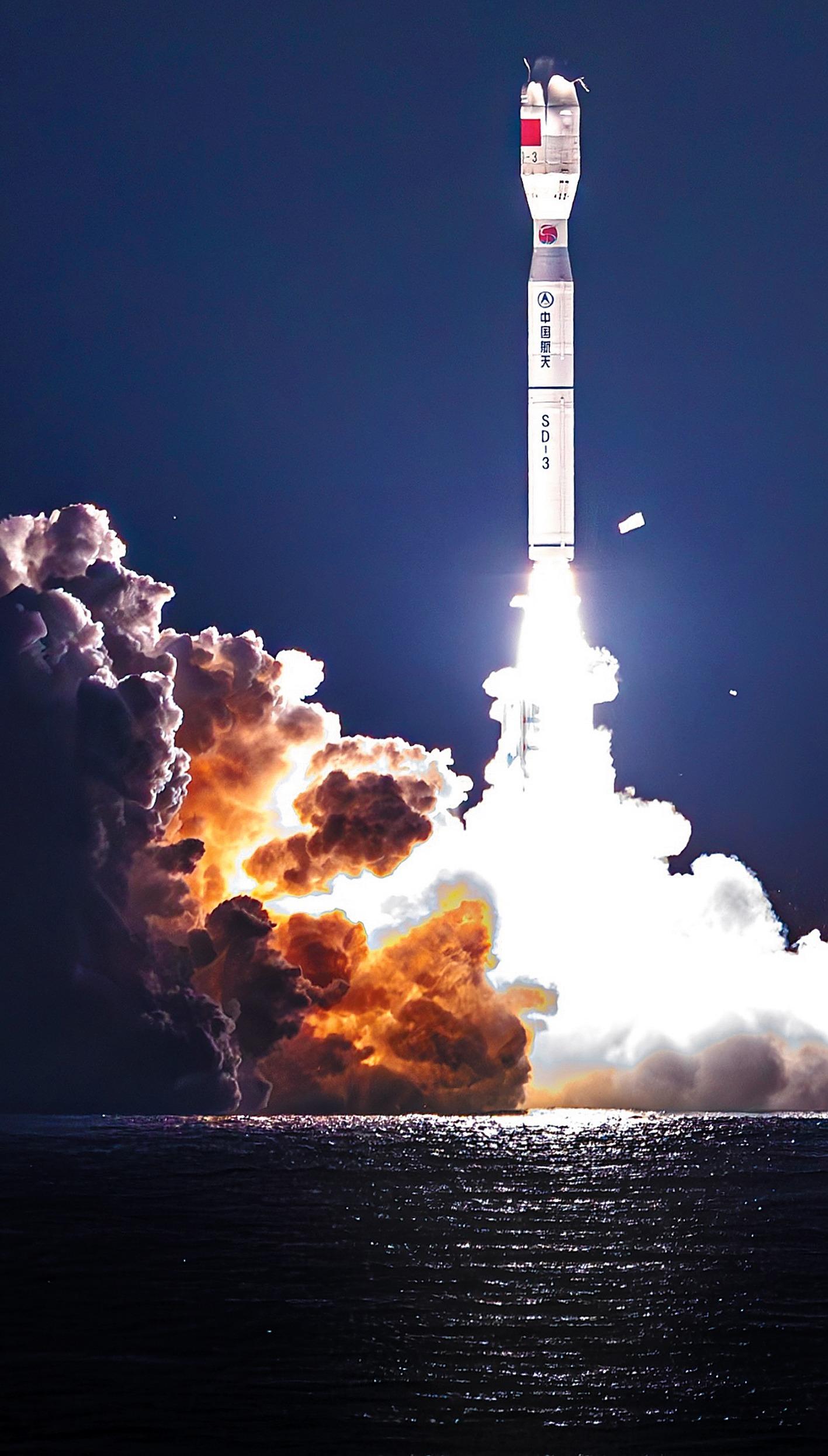 A Smart Dragon 3 rocket lifts off from waters off the coast of Guangdong province in December 2023. (ZHANG JINGYI / FOR CHINA DAILY)
A Smart Dragon 3 rocket lifts off from waters off the coast of Guangdong province in December 2023. (ZHANG JINGYI / FOR CHINA DAILY)
The first launch service tower was completed at Hainan International Commercial Aerospace Launch Center in Wenchang, a coastal city in the island province of Hainan, on Dec 29, the last work day of 2023.
However, work continues at the center for its maiden launch, which is expected to take place around June.
When put into operation, the center will become the fifth ground-based launch complex in China and the first dedicated to serving commercial space missions rather than government-funded programs.
In China, a commercial space mission generally refers to a space activity paid for by a business entity rather than a government department.
Construction of the new center, which began in July 2022, was undertaken by China Aerospace Construction Group.
The No 1 service tower is about 90 meters high and incorporates the latest rocket-launch technologies. It is specifically tasked with servicing Long March 8 carrier rockets.
Developed by the China Academy of Launch Vehicle Technology, a subsidiary of China Aerospace Science and Technology Corp, the Long March 8 family consists of multiple medium-lift launch vehicles designated for commercial space missions.
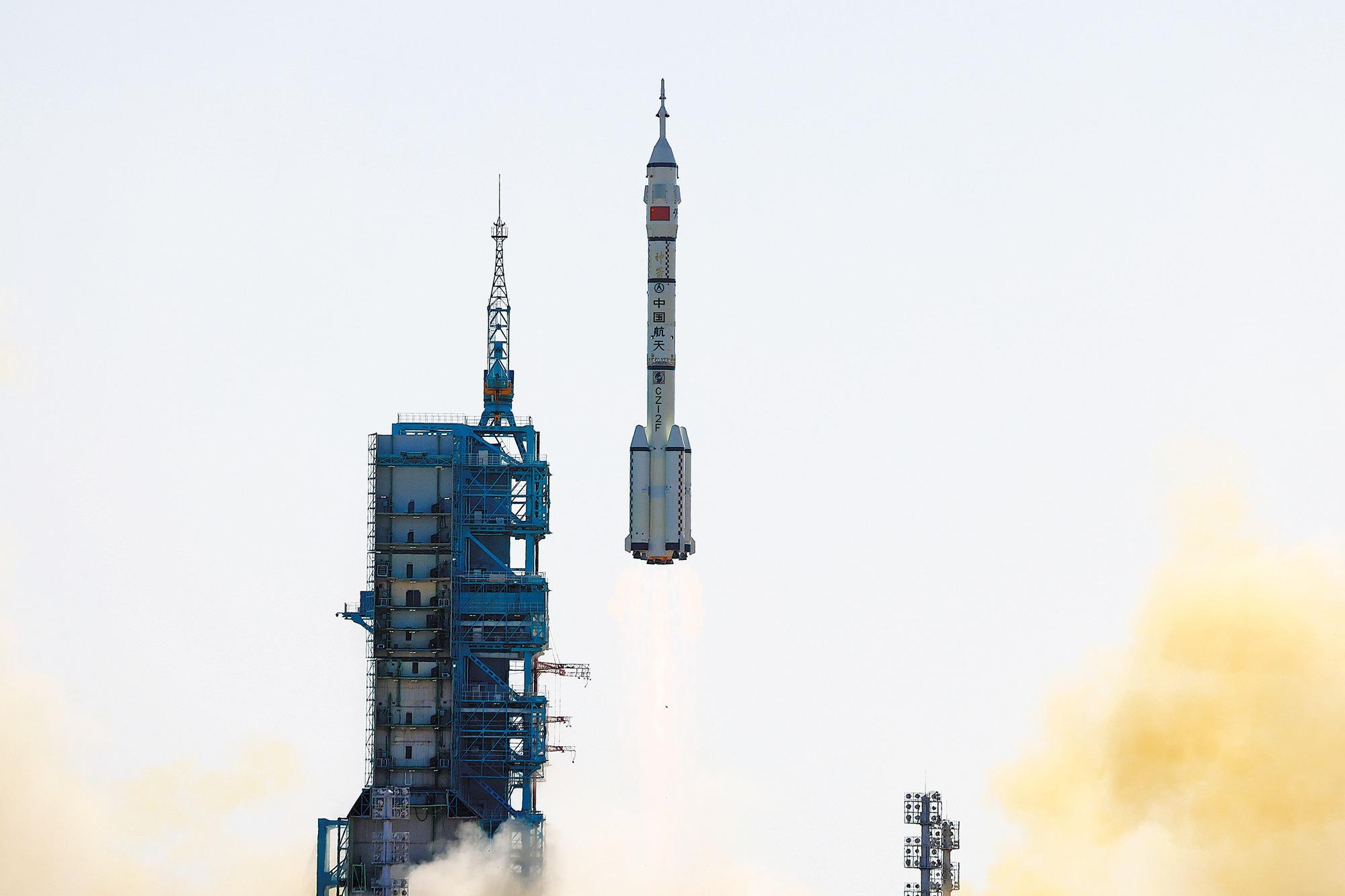 A Long March 2F rocket carrying the Shenzhou XVII spacecraft lifts off from the Jiuquan Satellite Launch Center in October, 2023. (ZHU XINGXIN / CHINA DAILY)
A Long March 2F rocket carrying the Shenzhou XVII spacecraft lifts off from the Jiuquan Satellite Launch Center in October, 2023. (ZHU XINGXIN / CHINA DAILY)
Yang Tianliang, chairman of Hainan International Commercial Aerospace Launch Co, owner of the new center, said the complex's debut mission scheduled for June will be performed by a Long March 8 rocket lifting off from the No 1 service tower.
The new center project is a joint venture by the Hainan provincial government and three State-owned space conglomerates — China Aerospace Science and Technology Corp, China Aerospace Science and Industry Corp, and China Satellite Network Group.
There is already a launch complex in Hainan — the Wenchang Space Launch Center. Like the other three such centers in China — Jiuquan, Taiyuan, and Xichang — it is administered by the central government and is primarily tasked with serving State programs such as lunar explorations and manned spaceflights.
The Hainan provincial government has said it intends to make the new site a leading launch facility that will be fully commercially managed to support the long-term growth of the nation's commercial space industry.
Thanks to the central government's encouragement and favorable policies, more Chinese private companies have become involved in satellite businesses ranging from design and manufacturing to in-orbit operations and data processing, generating huge demand for commercial launch services.
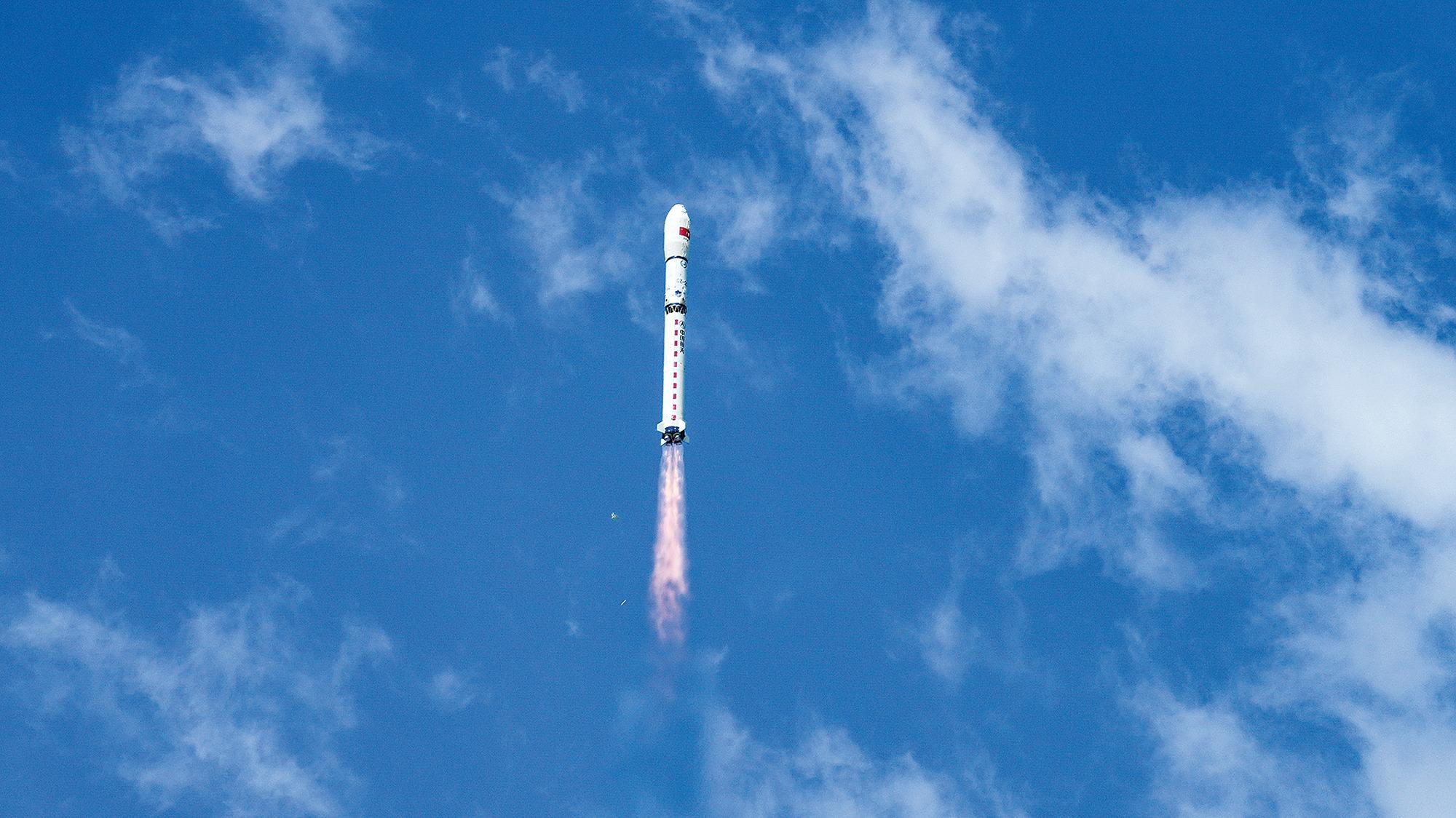 The Lingxi 03 satellite is carried into space in July. (PROVIDED TO CHINA DAILY)
The Lingxi 03 satellite is carried into space in July. (PROVIDED TO CHINA DAILY)
Several private enterprises have announced or begun to implement plans to establish space-based networks with tens or even hundreds of satellites for broadband internet or data collection businesses.
Hu Shengyun, a senior rocket designer at China Aerospace Science and Industry Corp, said the existing government-run launch centers are too busy to handle rising demand from the commercial space sector. It is also not uncommon for even a government-assigned mission to have to await scheduling at those sites.
Each of the existing centers has only one or two service towers, and important State missions such as crewed flights always have priority, Hu said.
"Moreover, the management and operational methods of these centers are specifically designed for State-funded programs rather than commercial missions, so carrying out numerous commercial launches will likely create problems or challenges for them," he added.
Yang said construction of a second launch service tower at the center in Hainan is expected to be finished next month.
Installation and fine-tuning work on this tower is due to be completed in May, he said, adding that it will be able to service as many as 19 types of rockets, most of them produced by private companies.
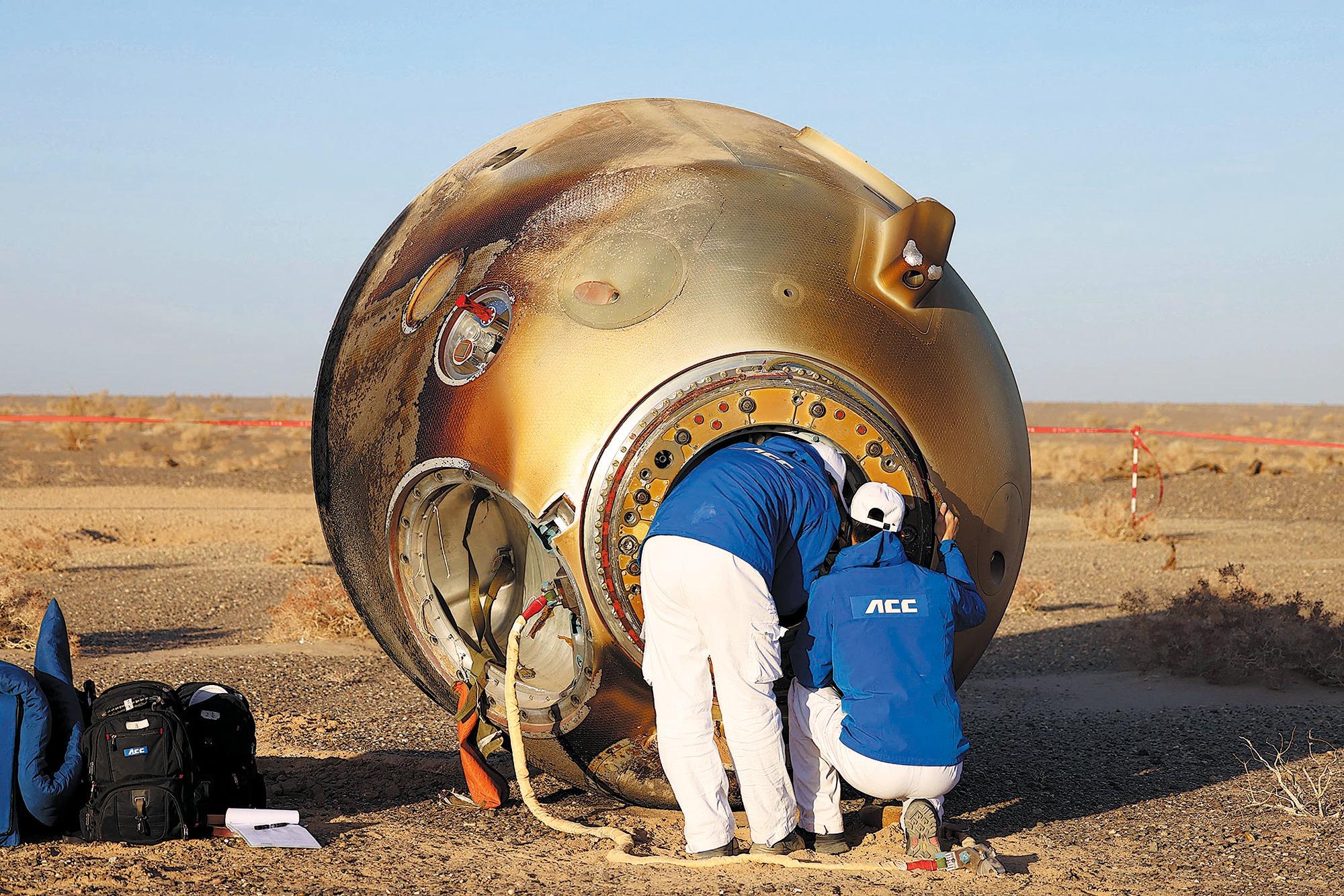 Researchers examine the capsule of the Shenzhou XVI manned spaceship after it touches down at the Dongfeng Landing Site in Inner Mongolia autonomous region in October, 2023. (ZHU XINGXIN / CHINA DAILY)
Researchers examine the capsule of the Shenzhou XVI manned spaceship after it touches down at the Dongfeng Landing Site in Inner Mongolia autonomous region in October, 2023. (ZHU XINGXIN / CHINA DAILY)
New power
Private enterprises have become a new power in China's rocket industry, with their growth being fast-tracked.
Last year, when the nation carried out 67 rocket launches, 12 rockets built by Chinese private companies were used to send satellites into space, far more than in previous years.
In April, the first TL 2 rocket, developed by the startup Space Pioneer, which is based in Beijing, reached orbit on its maiden flight, becoming the first privately built, liquid-fuel rocket in China to do so.
Lifting off from the Jiuquan Satellite Launch Center in northwestern China, it placed a remote-sensing satellite in a sun-synchronous orbit about 500 kilometers above the Earth.
It was the first time any privately developed, liquid-propellant carrier rocket in the world had succeeded in its first orbital attempt — a powered flight that places a craft in orbit in outer space.
Before the TL 2, all liquid-propellant rockets developed by private enterprises, including SpaceX and Virgin Orbit in the United States and China's LandSpace, failed on their first orbital attempt.
The successful launch also saw Space Pioneer become the third private company in China to carry out an orbital mission.
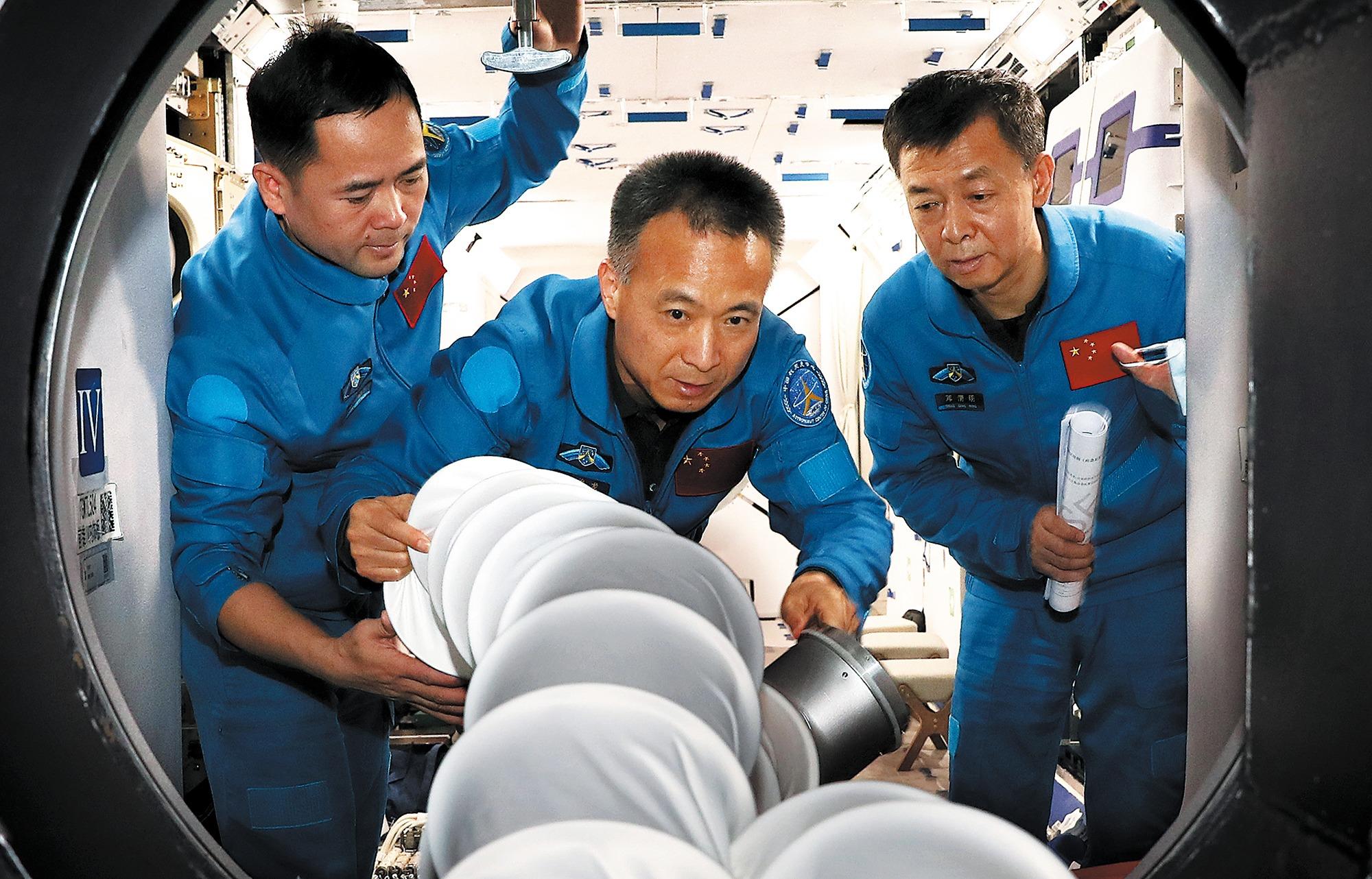 The astronauts for the Shenzhou XV mission, Fei Junlong (center), Deng Qingming (right) and Zhang Lu, train in a simulated cabin in March 2022. (XU BU / FOR CHINA DAILY)
The astronauts for the Shenzhou XV mission, Fei Junlong (center), Deng Qingming (right) and Zhang Lu, train in a simulated cabin in March 2022. (XU BU / FOR CHINA DAILY)
Previously, i-Space and Galactic Energy, which are both based in Beijing, achieved the feat using their own solid-propellant rockets. Such rockets are easier to design and make than liquid-fuel rockets, but their smaller capacity means they cannot launch large satellites or deploy spacecraft to high orbits.
Wang Yanan, editor-in-chief of Aerospace Knowledge magazine, said the TL 2's success is a milestone for China's space industry, as it shows that the nation's private players have grown strong enough to undertake important tasks previously only conducted by State-owned giants.
TL 2, which stands for Tianlong 2 or Sky Dragon 2, is 32.8 meters high, 3.35 meters wide and has a liftoff weight of 153 metric tons. Space Pioneer said the rocket can send satellites with a combined weight of 1.5 tons to a sun-synchronous orbit at an altitude of 500 km, or spacecraft weighing two tons to a low-Earth orbit.
In July, the ZQ 2, short for Zhuque 2 or Rosefinch 2, a rocket developed by LandSpace, succeeded in its second attempt to reach orbit, becoming the world's first methane-fueled rocket to complete an orbital mission.
Last month, the third flight of the ZQ 2, now the largest and most powerful private rocket in China, was successfully conducted.
The maiden ZQ 2 flight took place in December 2022 from the Jiuquan center. The rocket successfully crossed the Karman Line, the globally recognized boundary between the Earth's atmosphere and the edge of space, but malfunctioned on its second stage and failed to reach orbit. This was also the first attempt in the world to achieve orbit with a methane-fueled rocket.
The ZQ 2 is 49.5 meters high and has a diameter of 3.35 meters. With a liftoff weight of 219 tons, it can place a four-ton satellite into a typical sun-synchronous orbit about 500 km above the Earth, or a six-ton satellite into a low-Earth orbit at an altitude of 200 km.
 China’s first man in space Yang Liwei (third from left) bids farewell to the Shenzhou XVII mission crew at the Jiuquan Satellite Launch Center in October 2023. (PROVIDED TO CHINA DAILY)
China’s first man in space Yang Liwei (third from left) bids farewell to the Shenzhou XVII mission crew at the Jiuquan Satellite Launch Center in October 2023. (PROVIDED TO CHINA DAILY)
The rocket's main propulsion system — the TQ 12 — is the first methane engine in China. Before LandSpace, only a handful of companies in the US had developed such engines.
Compared with traditional types of rocket engines that can function only once, a methane engine is reusable and more environmentally friendly.
Yang Yuguang, a senior space industry observer and vice-chair of the International Astronautical Federation's Space Transportation Committee, said methane engines are widely recognized as the most suitable propulsion system for reusable rockets.
Engineers worldwide had been working to develop reusable engines for many years, but it took a lot of money and time to perform maintenance on those engines used previously before they could be reused, Yang said.
"By contrast, methane engines promise the most convenient checks and maintenance for reuse, saving a considerable amount of time and money," he added.
In September, Galactic Energy became the first Chinese private company to carry out a sea-based launch mission.
The seaborne variant of its Ceres 1 rocket lifted off from a mobile launch platform — the deck of a modified barge — in the Yellow Sea off the eastern province of Shandong. It sent four satellites into orbit about 800 km above Earth.
The Ceres 1 is the third Chinese rocket model, and the first made by the private sector, capable of lifting off from land and sea.
Xia Dongkun, a vice-president at Galactic Energy, said a sea-based launch gives the company an alternative to the nation's land-based launch facilities that are busy handling government-backed programs.
"This enables us to make more launches each year," Xia said.
To date, Galactic Energy has carried out 11 Ceres 1 launches, far outperforming other private competitors. Last year, it made seven launches — six of them successful.
 Gui Haichao, the Shenzhou XVI mission’s science payload specialist and the first Chinese civilian in space, receives underwater training. (XU BU / FOR CHINA DAILY)
Gui Haichao, the Shenzhou XVI mission’s science payload specialist and the first Chinese civilian in space, receives underwater training. (XU BU / FOR CHINA DAILY)
Satellite technologies
Private players have also come of age in the satellite field to become a flourishing seedbed for technological innovation and creativity.
GalaxySpace, a leading private satellite maker, built China's first satellite equipped with a flexible solar array and deployed it into space in July.
The satellite, Lingxi 03, is a plate-shaped communications satellite. It has a millimeter-wave multibeam digital payload, which features a transmission capacity of tens of gigabits per second.
Zhang Shijie, a senior spacecraft researcher and GalaxySpace's chief scientist, said the satellite's main task is to verify a next-generation low-Earth-orbit broadband communication system and other satellite technologies, including an ultra-large energy system and active thermal control.
He said the Lingxi 03's flexible solar wing is a major technological feat, because such apparatus has proved through the construction of massive satellite networks by foreign companies to be crucial in establishing an internet satellite system.
"The solar wing has been working well and the results of its trial run were better than we expected," Zhang said.
Zhu Zhengxian, chief technology officer at GalaxySpace, said the solar wing is extremely thin — each layer is only about 1 mm thick — and when the wing is folded inside the rocket before launch, it is only 5 centimeters thick.
"When fully unfolded in space, the array is about nine meters long and more than 2.5 meters wide. It is characterized by its small folded size, light weight and modular design," he said.
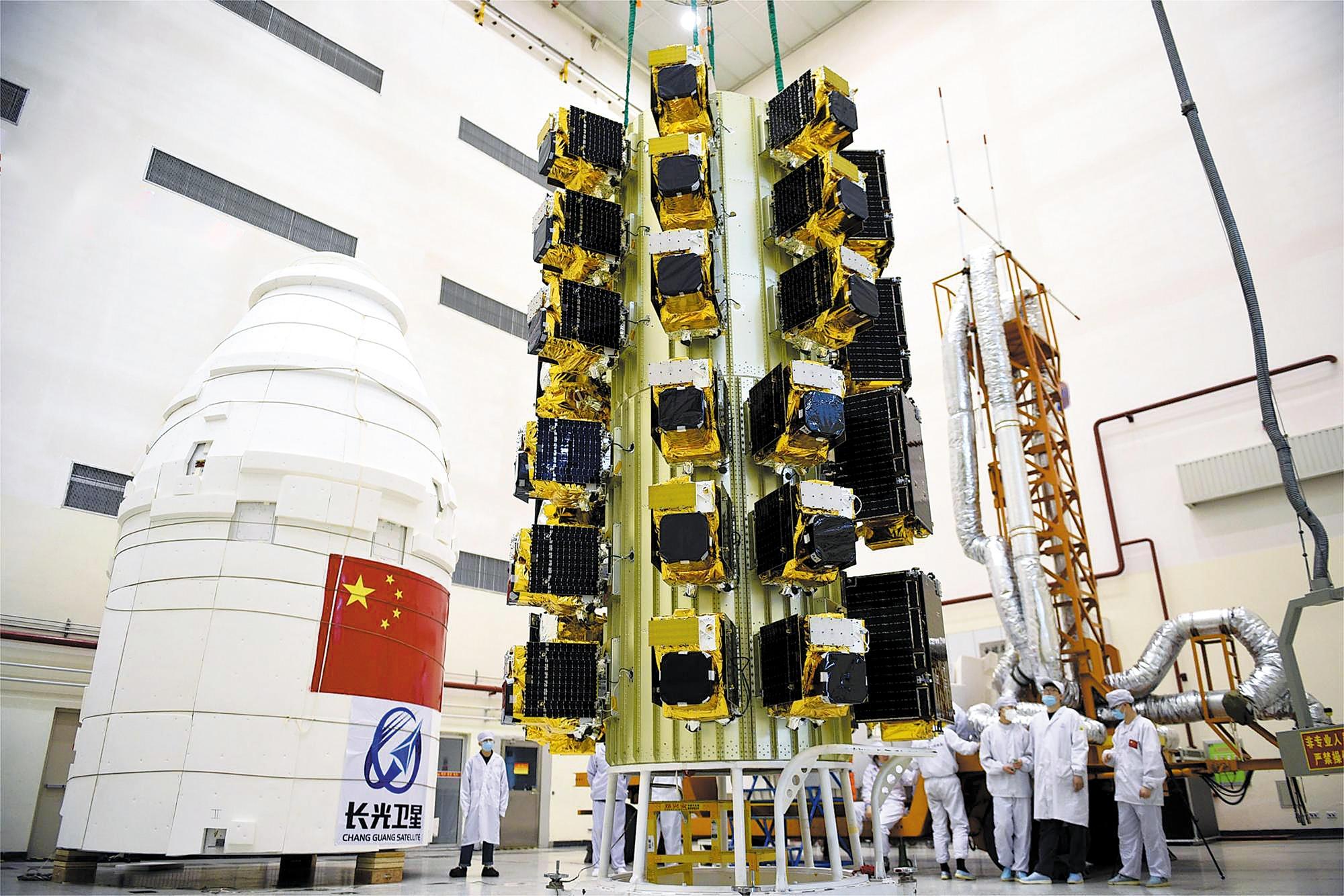 A total of 41 satellites are placed inside a Long March 2D carrier rocket before their launch in Taiyuan, Shanxi province. (PROVIDED TO CHINA DAILY)
A total of 41 satellites are placed inside a Long March 2D carrier rocket before their launch in Taiyuan, Shanxi province. (PROVIDED TO CHINA DAILY)
Deployment of the satellite also marked the first in-orbit verification of China's multisatellite stack deployment method, which is used when a rocket is required to put a number of plate-shaped satellites into orbit.
"This method will play a major role in the rapid deployment of multiple communication satellites in low orbit," Zhu said.
Last year, Ellipspace, another private satellite maker based in Beijing, launched four remote-sensing satellites in its Starpool 1 network, marking the start of its ambitious plan to establish a large space-based system consisting of more than 100 satellites.
Remote-sensing satellites are tasked with detecting and monitoring the physical characteristics of objects on land or at sea by measuring the targets' reflected and emitted radiation.
Di Fengping, president of Ellipspace, said the company plans to use the network to obtain data for users in businesses such as oil and electricity infrastructure patrol work, protection of animals and nature reserves, agricultural insurance, emergency response, disaster relief, and marine infrastructure maintenance. The network is due to be completed by 2027.


